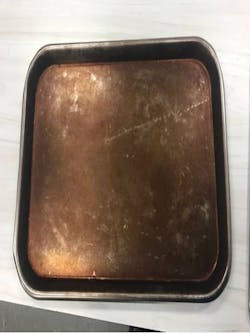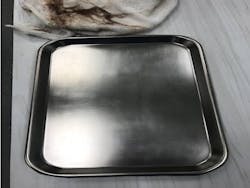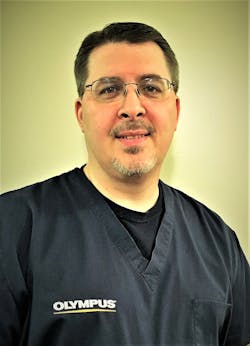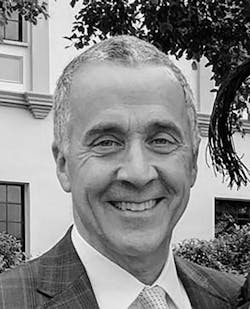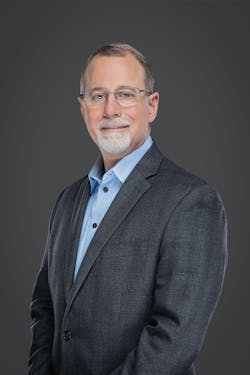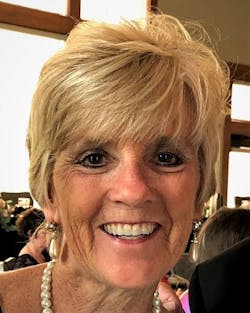Clinging to customer service amid cost containment
Each person may harbor a specific definition of superb customer service based on attention to detail that motivates a safe and welcome return to transacting with that vendor time and time again.
And while each person’s expectation of superb customer service may be customized to individual preferences, key elements seem to form a framework for an effective model. The common denominator? Three criteria: Access to service with someone helpful and understanding, convenience and quick response – the more immediate and rapid, the better.
Whereas healthcare providers (as in buyers) know superb customer service when they experience it, healthcare suppliers (as in sellers) recognize their own capabilities of delivering on demand.
To close out 2023, and the remnant of a global pandemic, Healthcare Purchasing News (HPN) wanted to offer suppliers – manufacturers, distributors and service companies – the opportunity to reflect on what they feel were demonstrations of exemplary customer service. HPN amassed a broad list of companies spanning supply chain, sterile processing, surgical services, infection prevention, environmental services and information technology, spotlighting 20. Specifically, HPN asked them to share details about what happened with a customer, how they handled it together, who participated in the solution and how they collaborated to move forward.
HPN felt such ideas would serve as an informative breath of fresh air and good news to cap yet another year clouded by continuing cost pressures. [Editor’s Note: Due to the healthy response you will find more examples continued at HPN Online.]
Healthmark Industries
Specific challenge the customer faced: We had one particular customer that was using a cleaning verification daily and it was passing. But when they were introduced to a true surrogate cleaning verification (TOSI) and began to use it, the results were inconsistent and sometimes failing. Also the datalogger (TempChek DL), which identifies time and temperatures within a wash cycle, identified numerous incorrect temperatures and time duration during the cycle.
How the challenge was addressed and solved directly or by assisting the customer: To get to the root cause (s), we first addressed the simple fix-it-yourself items, such as unclogging rotating arms and readjusting rotating arms to the correct placement. From the results of the datalogger the service equipment representative was involved to adjust times and temperatures for each phase of the wash cycle, e.g., added a cold pre-rinse cycle, enzymatic cycle temperature was lowered, and detergent phase time was lengthened.
--Cheron Rojo, senior clinical education specialist, Healthmark Industries
VPL
Specific challenge the customer faced: A valued, long-time customer of VPL who was also one of the nation's most comprehensive, integrated health care delivery systems, came to us originally because they were challenged by uncontrolled costs partially driven by unmanaged freight spend and also unmonitored supplier shipping behaviors.
How the challenge was addressed and solved directly or by assisting the customer: VPL worked on their behalf to get more freight managed and made sure they were taking advantage of the best rates available to their specific health system. Reducing unmanaged freight saved this customer almost $30,000 alone, and we were able to identify an additional $70,000 in savings with lower freight costs overall. Additionally, by monitoring their freight spend, we were able to pinpoint an instance of unusually high spend from one particular supplier that was shipping everything express which was not a part of the contract. This overspend amounted to $30,000 that the customer would've otherwise paid, but VPL chased down to make sure they saw they received a refund and fixed the issue going forward.
--Amber Bielak, product manager, VPL
Tecsys
Specific challenge the customer faced: Our customer faced the challenge of optimizing their surgical supply chain with a focus on waste reduction, resource efficiency and patient care. To address this, we restructured processes, introduced dynamic inventory management and optimized staff allocation. By introducing automation, our customer was able to streamline operations, which allowed them to establish rigorous quality control measures. As a result of these changes, the perioperative environment benefited from a significantly more efficient and streamlined supply chain.
How the challenge was addressed and solved directly or by assisting the customer: Drawing on our expertise in supply chain, Tecsys collaborated closely with the health system’s supply chain leadership. The team secured executive support to deploy a data-driven approach to preference card optimization. This involved a systematic analysis and refinement of preference cards used in surgical procedures, ensuring only items with regular utilization were included. By removing seldom-used items from the pick lists, our customer was able to significantly cut down on reprocessing costs, mitigate discrepancies in inventory counts and reduce unnecessary product orders.
--Cory Turner, CMRP, senior director, Healthcare Strategy, Tecsys
The Ruhof Corp.
Specific challenge the customer faced: My customer began working at a new surgical center at a Texas hospital facility. As the facility had not performed general surgery in many years, she noticed significant rust and staining on the existing stainless-steel trays and instruments. Not wanting to bear the expense of replacing these items, she asked for my help.
How the challenge was addressed and solved directly or by assisting the customer: I had our warehouse expedite her a case of our Surgistain quick revitalizing solution for stainless steel surgical instruments, trays, basins, case carts, etc. The product removes rust, stains, spotting, hard water scale and mineral deposits and helps to loosen stiff joints and locks. My customer decided to give Surgistain a try and was thrilled with the results. In her own words: “We soaked and scrubbed and now have a new looking tray that will be useable for many more years.” She tried it on some other products and got the same great results. She was so happy that she even provided us with before and after photos.
--Vic Preston, senior account executive, The Ruhof Corp.
Olympus Corporation of the Americas
Specific challenge the customer faced: The health and safety of patients and delivering great customer service are key values in Olympus’ journey toward our goal of improving patient safety. One component of the Olympus support for patient safety is our Endoscopy Support Specialist (ESS) Team, providing 80+ ESS’ across the country. The ESS team provides customer education focused on proper care and handling of Olympus products, endoscope reprocessing based on the manufacturer’s instructions, guidance on Association for the Advancement of Medical Instrumentation (AAMI), Association of periOperative Registered Nurses (AORN), American Society for Gastrointestinal Endoscopy (ASGE), and Society of Gastroenterology Nurses and Associates (SGNA) Society Guidelines, as well as information on our products.
Bill DeMattie, ESS in the Midwest, is an example of an Olympus employee who goes the extra mile for his customers. Bill supports several large teaching hospitals in the area, providing frequent education on reprocessing, equipment care and handling and guidance on infection prevention best practices and processes. He is the “go-to” person for hospital employees when they have reprocessing or related questions.
A teaching facility in his territory had been experiencing turnover in reprocessing staff coupled with a high-volume of daily procedures at multiple locations. At times, spikes in procedure volume drove the need for some locations to share equipment. An equipment inventory coordinator and nurse manager from the facility approached Bill late one afternoon with an urgent situation stating patient procedures were scheduled the next day and the location did not have the proper equipment in-house to complete some procedures since some items were at Olympus for scheduled maintenance.
How the challenge was addressed and solved directly or by assisting the customer: DeMattie quickly went into action, sourcing equipment for the facility through the Olympus equipment loaner program. With the equipment delivered in time to the hospital, the facility was able to perform the required procedures without impacting patient care.
--Theresa Kunsman, senior product manager, Cleaning/Disinfection/Sterilization, Olympus Corporation of the Americas
Cardinal Health
Specific challenge the customer faced: We recently had a customer contact us about a mother who had been discharged with a new baby in need of specialized formula. The mom had only a few days of the formula sample on hand. Not only was this new mom adjusting to her brand-new role as parent, but she was also navigating the complexities of healthcare and receiving products in the home. The specialized formula required for the baby is considered “special order,” meaning we order on-demand and products typically have a longer lead-time. However, understanding the urgency for this patient, we collaborated with our customer and the product manufacturer, as well as across our business, to deliver product for this patient before her samples ran out.
How the challenge was addressed and solved directly or by assisting the customer: Our customer took the lead in helping the patient navigate insurance coverage. When our customer informed us of the situation and its urgency, they asked if we could escalate the distribution process for their patient. We quickly stacked hands to escalate a new order with the product manufacturer and were able to expedite product before the patients’ sample formula was depleted.
--Erika Burkett, director, Customer Service Management, Cardinal Health at-Home
Metrex
Specific challenge the customer faced: We recently worked with two customers, one a large non-acute care organization with facilities across many states and the other a large academic medical system with acute and non-acute facilities in a regional area. The challenge they faced was in changing their disinfectant wipe products due to the hurdles they faced in moving their staff and organizations to new solutions after years of use with their previous products. While changing wipes may seem on the surface to be a simple task, this challenge was magnified by their multiple locations, shifts and departments/floors that all had to be brought along the journey while ensuring staff remained compliant to protocols (e.g., properly following kill times or using the right product in appropriate situation) so patient safety was not compromised. Even factors like the brackets on the walls that held the wipe canisters had to be considered as part of the change.
Both customers were very interested in changing their disinfectant wipes to newer products for clinical and financial benefits, but the scope and effort to implement the change and retraining staff made them rethink their decisions. The burden to execute the change fell on their clinical staff who had conflicting priorities and limited bandwidth. They needed help or the change might not happen at all!
How the challenge was addressed and solved directly or by assisting the customer: Metrex stepped up by offering resources, both human and materials, to assist the customers in implementing the change. Each customer has unique needs, so Metrex asked customers what was needed to make the new product introduction easier and successful. It came down to three key areas: Educational/transition materials for staff to easily reference to understand the new products and where/when they would be used; resources (people) to help educate their staff in-person on-site; and clinical resources to connect with staff virtually for in-service and clinical training.
Metrex produced and provided custom conversion wall charts to educate and remind staff of the previous product(s) and what new product was replacing them with essential instructions for use information. We offered new wall brackets as well as stickers to use on existing brackets to identify the new products.
Metrex and our sales partners at MedPro Associates provided on-site in-person resources to assist the clinical staff in the transition and training of staff. In one case five people were provided to spend up to three weeks working with the various locations and teams. And two clinical resources were offered virtually to help cover more users and locations with in-service and clinical training.
Our sales team also assisted the customers’ materials management teams in calculating the amount of new product needed and setting new PAR levels (as these typically change when converting due to the differences in Unit-of-Measure between manufacturers).
All this was offered as a value-added service to our customers and was not something they paid for additionally. The positive customer reaction to the service and support provided has shown us how important this can be for some customers, and as mentioned before can be more important than pricing or clinical claims.
--David Nelson, director, Marketing, Metrex
Medline Industries
Specific challenge the customer faced: Medline is an integral and proactive partner in Stanford Medicine Health Care Supply Chain management and optimization of workflows. Working with Stanford’s [electronic data interchange] and data analytics partner, GHX, Medline helped solve previously “unsolvable” problems around auto-substitution, price assurance and exception management -- while creating new industry best practice standards along the way.
- Specifically, Stanford Medicine Health Care Supply Chain was facing three main challenges:
Auto-sub had never been successfully used in Lawson, one of Stanford’s ERPs - Conventional wisdom was that Auto-sub and TruePrice, Medline’s best-in-class price assurance solution, could not and had never been able to run at the same time
- New and comprehensive internal structures and processes were needed to support resulting automation and alignment with GHX’s reporting.
How the challenge was addressed and solved directly or by assisting the customer: The first order of business was getting Auto-substitution to work with GHX’s My Exchange and Stanford’s multiple ERPs. The manual process of ordering substitutes from Medline was inefficient and costing Stanford labor, space and inventory carry costs – along with the risk of stockouts. Medline began drilling into the issues of interfacing Stanford’s multiple ERP systems and Medline’s inventory system, capturing the myriad of differences between the primary item and the substitute item to implement the automated substitution process for clinically approved equivalent alternatives.
The partners recognized that technology automation alone would not fully solve challenges around auto-substitution. Auto-sub required developing a robust infrastructure within Stanford and its partners industry partners – process, structure, and technology all needed to be enhanced. Both entities would have to develop new internal structures and collaborative workflow processes to support the automation.
For example, Medline worked to modify their inventory management practices and adopt a new standard of work to ensure that appropriate stock levels of the substitute items would be available. Stanford, meanwhile, streamlined their substitute approval process to ensure timely approval of relevant substitute items. A Substitution Task Force was also enhanced to convene daily to vet clinically acceptable equivalents. A process that used to take up to four weeks was streamlined to an average of five days, and less than 72 hours in the most emergent cases.
Both entities then came together to code a custom interface between Medline systems and the Lawson ERP to optimize data transfer, cadence and alignment within the Auto-sub program.
In tandem with the Auto-sub work, Supply Chain and Medline teams supported by GHX set out to implement a best-in-class price accuracy solution in Medline’s TruePrice using GHX’s MyExchange portal to monitor and measure efficacy. At every step along the way, the group turned to process improvement best practices to come to consensus on the best way to implement other required solutions and create collaborative structures meant to sustain improvement work after the project had culminated.
--Joseph Riggio, vice president, IDN Market Sales, Medline Industries
Xenex Corp.
Specific challenge the customer faced: Example 1: We manufacture LightStrike+ Germ-Zapping Robots that are used to reduce the microbial load (the number of pathogens) on non-critical medical devices in rooms in healthcare facilities. The robots are often operated by a hospital’s Environmental Service (EVS) employees, a department in which employee turnover can be a challenge. As part of our service program, Xenex’s customer success team provides monthly utilization reports to our customers so they can review where their robots are being run, how often, and by whom. One customer requested metrics from other hospitals. She wanted to measure and compare the efficiency (number of rooms addressed per day per robot) of their facility against other hospitals around the U.S. so they can share their EVS team’s success with management at their hospital. Obviously, we can’t share the hospital names with them but we are able to tell them how their team ranks versus other facilities nationwide, and they’ve found that this helps motivate them to continue to maximize utilization of their LightStrike robots. [Insert Mack photo]
Example 2: Xenex prides itself on customer service and partnering with its customers to help them solve their challenges. We were recently approached by a hospital that was experiencing a challenging situation with C.diff spores in a specific unit in their facility. As a longtime customer, they are aware of the LightStrike robot’s efficacy against C.diff spores and wanted to treat all the rooms in that unit with a LightStrike robot. They asked their Xenex sales rep for a loaner robot so they could continue operating their LightStrike robots throughout the day in other rooms within the facility (per their standard operating protocols) and focus the loaner robot on reducing the number of C.diff spores within the targeted unit. We quickly shipped them a loaner robot, and they were able to treat all rooms within the targeted unit while their LightStrike robots continued being used in other parts of the hospital.
How the customer eliminated the challenge from happening again and what preventive measures were implemented either by the vendor and/or the customer: Stopping the spread of pathogens within their facility is a top priority for healthcare leaders. Xenex team members work closely with our customers to understand their goals and develop standard operating protocols for their LightStrike robots to help them reach those goals. We believe that ongoing communication with our customers is one of the things that sets us apart from other vendors. For example, recognizing the turnover challenge within many hospitals, we offer a comprehensive online training program to teach new team members about their robots and how to use them. Whether it’s getting our Science Team on the phone with a customer that is battling a specific pathogen, providing a loaner robot if needed, or arranging for training for new employees, we want to do everything possible to help our customers succeed.
--Rodger Mack, executive vice president, Operations, Xenex Corp.
Curvo
Specific challenge the customer faced: This 400+-bed, nonprofit community medical center struggled with medical device contracts, in particular a three-year battle with total joints pricing. The medical center provides a range of services to a West Coast metropolis and adjacent counties. The facility was recognized as a Best Regional Hospital and a High-Performing Hospital by U.S. News & World Report.
The hospital had tried to get total joints pricing reduced for three years without success. The seasoned Supply Chain Director knew the prices were too high but lacked the data and bench strength to go after it. The cost reduction initiative wasn’t getting traction with surgeons, and suppliers were ignoring them. The supply chain leader was running into a brick wall, and frustration was high.
How the challenge was addressed and solved directly or by assisting the customer: We repaid customer trust with significant savings opportunities. Curvo came in, looked at the data and agreed – their pricing was too high.
How Curvo took action:
● Leveraged benchmarking data
● Analyzed physician total joint utilization data from health system
● Led two rounds of negotiation with suppliers
● Reduced total joints cost by 16% ($300,000)
“We successfully leveraged data and our expertise for a nice balance between automation and services to drive a really good result,” explained Joe Jackson, vice president of Customer Experience, Curvo.
The process kicked off in late August and finished with a contract signing in October – less than two months. Not a bad result after years without progress. “It's not at all unusual for these projects to drag on for months,” Jackson said. “I think suppliers move faster because we know the information as well as they do.”
While other hospitals have bigger Total Joints spend, for this medical center, the 16% savings represented a big win. “Usually, in one contract cycle, if I can get eight to 10 percent, I'm happy. Getting 16 percent is excellent. It's a significant movement,” he declared.
--Joe Jackson, vice president, Customer Experience, Curvo
Innovative Health
Specific challenge the customer faced: A large, multi-facility customer out of Denver was not getting enough savings out of their reprocessing program – reprocessed devices were not routinely bought back and utilized. Instead, new devices were used even if reprocessed devices were available. The purchasing system did not allow for preference to be given to reprocessed devices. This prevented the hospital system from realizing the roughly 50% lower price of reprocessed devices. At the same time, the [purchase order] process was so cumbersome (and not designed for regular acquisition of reprocessed devices) and time consuming, that by the time a PO was issued, a new product had replaced the reprocessed product.
How the challenge was addressed and solved directly or by assisting the customer: Our customer service team went in and mapped out the entire process, from ordering to picking products for procedures. The team worked with the hospital system’s procurement team and developed a plan to fix the problem. Our clinical integration and distribution teams arranged for a warehouse to be set up for high-volume devices, solving the time-delay issues the procurement system caused. Processes and signage were put in place to favor reprocessed devices over new.
--Lars Thording, vice president, Marketing & Public Affairs, Innovative Health
PartsSource
Specific challenge the customer faced: Marshfield Clinic has worked hard to streamline its medical equipment management program, especially during the significant healthcare challenge of staffing shortages. But there are still core items that need regular maintenance done for effective operations and regulatory requirements. Infusion pumps are one of the items that require regular maintenance and are one of the most used pieces of all the Marshfield biomedical department’s equipment. In one hospital alone, Marshfield has nearly 700 pumps that require annual, routine preventative maintenance to ensure quality care for patients.
Though the Marshfield biomed team can perform these maintenance tasks in-house, it pulls all their biomedical service staff and resources away from other responsibilities including the management of higher-value, critical care equipment.
How the challenge was addressed and solved directly or by assisting the customer: PartsSource quickly identified and confirmed a trusted vendor from its national network to complete these routine tasks at nearly the same cost as Marshfield’s team performing them in-house. Marshfield now uses this vendor for the maintenance of all its IV pumps so its internal teams can focus on higher-safety and revenue-driving equipment such as anesthesia machines, defibrillators, and other life-saving equipment.
--Robert Proctor, vice president, Enterprise Sales, PartsSource
Belimed
Specific challenge the customer faced: Recently we had the opportunity to host our Customer Advisory Panel members in person where specific examples of customer service done right was shared with our various team members. Belimed has focused this year on our core values, one of those being customer insight, where we work to ensure we understand our customers challenges. One example [involved] a customer who had been introduced to a product of ours, an ultrasonic machine at the HSPA conference two years ago. A Belimed team member (account manager) was able to use this opportunity to follow up and begin building a relationship, visiting the account, learning about their challenges, layout and structure of the department and potential ultrasonic needs. After the purchase and planning were complete, the ultrasonic was not able to be installed on the planned date, due to an issue that was out of our control. The reprocessing team was devastated as the new equipment had been delivered on time and was ready to go for installation, but unfortunately the facility suffered from water challenges [so] installation could not be completed as planned. The water issues needed to be addressed before this ultrasonic could be installed or used by the department.
How the challenge was addressed and solved directly or by assisting the customer: Our team continued to support the customer as we would normally. The issue that was taking place did not stop us from moving forward with education, follow-up and continuous communication to ensure there was nothing further we could do on our end. The Belimed local support scheduled inservicing for the staff and completed training for the entire team. After weeks of the ultrasonic equipment not being able to be installed still, we offered a refresher training to the team again before the equipment was to be used.
--Randalyn Walters, CRCST, CIS, CER, CHL, C.S.P.D.T., C.A.S.S.P.T., BLS, AAS, clinical education manager – U.S., Belimed Inc.
Ryder System
Specific challenge the customer faced: The pandemic ripped the [bandage] off the healthcare supply chain, exposing fissures in the traditional “distributor-managed” model that supplies many healthcare networks. That model relies on a handful of healthcare distributors to procure, store and deliver the majority of medical supplies to hospital networks, clinics, and in-home care providers across the U.S.
For those healthcare providers, space comes at a premium, so providers need to maximize space for patient care, not storing supplies. Stock rooms or “PAR locations” can be the size of small closets, so healthcare providers largely rely on a distribution method called “low unit of measure,” which provides a consistent flow of medical supplies in small quantities. This model, while efficient, experienced significant disruptions during COVID-19 as reliable resupply became the exception versus the norm. For one of Ryder’s healthcare customers, a large St. Louis-based hospital network, that presented obstacles such as:
- Lack of inventory control and supply chain visibility
- The system relies on a relatively small number of third-party intermediaries and just-in-time delivery practices to serve a large number of healthcare providers, impacting the model’s reliability
- Distributors buy massive quantities direct from manufacturers, bundling price and distribution and creating a lack of true price transparency
- Supply shortages can lead to supply allocations
Supply chain disruption or not, when clinicians cannot access patient care supplies when and where they need them, patient care can suffer. That’s why, when the pandemic emerged in the U.S. in 2020, Ryder and its healthcare customer had already started working to simplify the supply chain to improve service, lower cost and build resiliency – all part of their vision to set new industry standards and improve patient care outcomes.
How the challenge was addressed and solved directly or by assisting the customer: Working together, Ryder and its healthcare customer shifted the paradigm in transforming the customer’s supply chain to a rarely mastered, self-managed model from the traditional, widely adopted distributor-managed model. That has enabled the hospital network to achieve 100% inventory control, true price transparency, improved fill rates and on-time delivery, along with real-time, end-to-end visibility across its supply chain – all of which add up to more resilient supply chain and, ultimately, improved patient care outcomes.
In collaborating on this transformational solution with the Midwest hospital network, which serves 14 facilities and more than 3,200 beds, Ryder began by finding a centralized location for a 416,000-square-foot consolidated services center (CSC) to serve the entire network. Then, from the ground up, Ryder designed and engineered a highly automated facility that can fulfill orders around the clock, while also maximizing storage. Today, the CSC houses 9,000 active SKUs, including medical devices, pharmaceuticals, and surgical supplies.
Critical to Ryder’s customer was working with experts in warehousing, transportation, and operations, while also retaining its relationship with manufacturers and growing its planning capabilities. Today, the CSC’s storage capacity enables the hospital network to take control of its own sourcing and procurement; and, by purchasing supplies directly from manufacturers, it gains cost transparency, which empowers the team to make more informed decisions when it comes to patient-care dollars.
With full inventory control, Ryder’s warehouse management system also enables the hospital network to better forecast and demand plan for continuous improvement, minimizing waste and maximizing efficiency.
Ryder also implemented RyderShare, a one-of-a-kind digital platform that eliminates silos of information and access, enabling everyone involved in moving goods through supply chains – shippers, receivers, carriers and service providers – to easily see across the supply chain in real time and work together to prevent delays, find efficiencies, and ultimately, improve patient care. The solution also prioritizes the most critical items in each delivery, because Ryder designed it around fully engineered sequenced loads.
To ensure that the hospital network has access to critical care supplies 24/7, Ryder installed automation equipment. With the AutoStore, an automated storage-and-retrieval system, 27,000 robotically controlled storage bins continuously feed 1.3 miles of automated conveyors 24 hours a day with products bound for delivery trucks. The innovative goods-to-person system stores inventory bins vertically in a grid, and robots traveling overhead retrieve the bins as needed, reducing pick time and speeding inventory to the hospitals. The AutoStore also maximizes storage and allows for quick and easy scalability with no operational downtime, as well as minimizes impacts of the growing labor shortage.
--Norm Brouillette, senior vice president of operations, Retail, Technology and Healthcare, Ryder System
Diamond Storage Solutions
Specific challenge the customer faced: In the healthcare industry, innovation and collaboration are essential for optimizing patient care, staff safety and operational efficiency. Diamond Storage Solutions recently addressed a critical challenge in a large North American private infusion clinic network by transforming a seemingly straightforward problem into a custom, ergonomic, and professional solution.
The infusion network’s director of Operations and head of Supply Chain had a concern with the facilities’ hazardous waste collection process. They had a contract with a waste management service and utilized cardboard boxes for the disposal of biohazardous waste, mainly used IV bags. With no good option for dollies and lids that securely held and transported the containers and its contents, clinical staff were physically dragging these open boxes throughout the clinic while servicing patients, collecting biohazardous waste and staging these containers for pickup from their waste management provider. The Director was concerned about content exposure, ergonomic hazards, patient disruption and overall safety. The situation was not ideal, but finding a suitable solution proved elusive.
How the challenge was addressed and solved directly or by assisting the customer: What seemed like a simple task – purchasing an appropriate dollies and lids for these cardboard containers – was proving difficult, time-consuming and frustrating for the Operations/Supply Chain leader. He sought the support of Diamond Storage Solutions, whose attentive listening and meticulous problem-solving skills, coupled with their sophisticated engineering and leading-edge manufacturing capabilities, turned a custom need into a sophisticated solution. The design featured a custom-sized steel dolly and matching soft-close hinged lid, powder-coated to promote visual management with locking casters for easy transportation and safe storage.
--Terry Elliott and Jennifer Nageotte, partners and co-owners, Diamond Storage Solutions
Centrak
Specific challenge the customer faced: Healthcare leaders are increasingly recognizing the importance of implementing emerging technologies and real-time location systems (RTLS) infrastructure to empower staff and improve operational efficiency, supply chain processing, and patient throughput. This is even clearer now, as resources and staff have been stretched to the limit and staff retention is at an all-time low. In a recent survey, 63% of frontline workers said they spend more than an hour per day tracking down data, devices or information they need to do their job.
A 497-bed Michigan hospital that is part of a 98-hospital IDN faced a staffing and supply challenge and recognized the need to replace its former asset management tool due to poor system health, improper software configurations/standardization and a lack of robust reporting capabilities. These circumstances called for a new system that would better support and empower clinical staff and ensure patients receive high-quality and timely care.
The team faced multiple challenges with the plan to implement the new Asset Management and Staff Locating from CenTrak. The new system would include more than 2,000 staff badges and more than 7,500 mobile medical equipment (MME) tags. Converting to a new solution meant immense data cleanup and both system and equipment standardization were needed across the board. Standardization of technology deployment and utilization is key to ensuring efficiency throughout the health system. Throughout the implementation process, the Michigan healthcare team faced challenges from the previous system that needed to be addressed when implementing CenTrak’s technology. Under the former system, the facility didn’t offer streamlined equipment management, tracking process, or rental management workflow process. In addition, with previous failed programs, there was little to no staff buy-in regarding the value of the RTLS.
How the challenge was addressed and solved directly or by assisting the customer: Strategically implementing RTLS in a health system takes patience, staff buy-in and a strong partner invested in ensuring success. In this instance, the team at the 497-bed Michigan hospital deployed CenTrak’s enterprise-grade location technology system to facilitate asset management and workflow, helping increase clinician efficiency, reduce rental loss and average time searching for critical equipment and return more time to patient care.
Implementing a new technology throughout an IDN must be strategic and a joint effort across the entire system. When siloes occur, it can create disruption and frustration among staff, lessening buy-in. CenTrak worked closely with the hospital team, who were responsible for integrating the various systems and mobile devices and gaining staff buy-in throughout the facility. The creation of both an internal and external steering committee for system governance helped guide discussion and allowed CenTrak and the Michigan hospital to accurately map out the implementation and make decisions that are custom-tailored to the specific workflow.
Upon implementation, the hospital team saw a significant reduction in total days of use for their rental devices. Prior to the new implementation, rental equipment could be found in the soiled utility rooms and hallways, which resulted in delayed returns for rental equipment. With the daily RTLS reconciliation report, the team can now more accurately monitor and bill rental patient days, which saves the organization a significant amount of money. They’re solely paying for the time they’re truly using the equipment.
Following the streamlined process implementation for system access and data integrity, the hospital is now able to successfully track and manage their equipment fleet. In just a few short months, this deployment has prevented asset loss, reduced excess rental overcharges by over $1,000, secured one-time savings of $111,900 due to inventory rightsizing, and provided the projected value of $84,762 annually in a reduction of rental overcharges and lost assets. In the future, other facilities within this Michigan health system will be rolling out the same technology and leveraging the existing foundation roadmap and standardizations that have proven to be successful.
--Caryn Hewitt, MBA, BSN, CENP, CPHQ, senior director, Consulting Services, CenTrak
Zebra Technologies
Specific challenge the customer faced: At Zebra, we work closely with our healthcare customers and partners to ensure they have the right technology to streamline hospital operations and maximize the power of their workforce. For example, we recently worked with Banner Health network, which needed a mobile computing solution that would allow all clinical and non-clinical staff to communicate and access records securely in a centralized fashion. Banner Health selected our TC52-HC mobile computers for healthcare, which were deployed to all clinical and non-clinical teams across the hospital. Our healthcare-grade mobile computing devices and software are quick and simple to implement, rugged and easy to sanitize, and easy for nurses, doctors, and other hospital staff to learn and use on the go.
Banner Health, a Zebra Technologies customer, is a not-for-profit healthcare network with 30 acute care and critical access hospitals, 60 urgent care locations, and more than 200 physician clinics caring for populations across six U.S. states.
How the challenge was addressed and solved directly or by assisting the customer: With the implementation of our healthcare-grade TC52-HC rugged mobile computer, Banner Health effectively reduced wait time and turnaround time by 50%, reduced falls and decreased patient length of stay to 3.38 days. The TC52-HC also proved invaluable by enabling the hospital to achieve a sepsis compliance rate of 86% with a turnaround time of six minutes. Finally, Banner Health improved response time by 50% with bed exit at 17 seconds and staff assist to 1.05 minutes.
--Rikki Jennings, Chief Nursing Informatics Officer, Zebra Technologies
VUEMED
Specific challenge the customer faced: There are tens of thousands of medical products needed for hundreds of types of procedures and for very different patients with unique needs; thus, there are a tremendous number of devices on the market, the majority of which are stocked at hospitals. Prior to implementation of our inventory management system, these products were typically not tracked inside our hospital customers’ facilities or even to a specific patient, despite limited shelf life and being subject to possible recalls. Without accurate information about which items were needed for patient care, whether they were in stock, where they were located within the hospital and whether they had expired or been recalled, there was tremendous waste and risks to patients.
In addition, clinical staff commonly had to use cumbersome and manual systems to document items used on a patient, which led to errors in medical records and billing, and distracted them from focusing on the patient. Any breakdown in the supply chain affected patients directly by putting them at risk. Also, supply chain costs are one of the primary expenses for hospitals, and particularly impact institutions with a high case mix index, such as academic medical centers with busy interventional departments. Such departments (Cath labs, interventional radiology, EP, OR, GI/endoscopy) are areas where the majority of hospital supply expenses occur and where devices and implants constitute an essential part of patient care. However, despite the high costs at stake, blatant inefficiencies and potential adverse effects on patients, most such departments did not have the necessary visibility and control over their supply spend and levels of waste, and typically lacked accurate product utilization data due to poor inventory management and clinical documentation tools and practices.
With regard to implementation challenges specifically, our customers also had multiple caregiver-facing systems going live at the same time on the same deadline. This meant process and workflow changes for clinicians, administrators, and supply chain teams that had a direct impact on clinical documentation, billing, reordering, item management, and inventory control. We also needed to ensure that the right data was passed from one system to another correctly, and in due time, to ensure that everything worked well in our current environment where systems are more interdependent than ever for users.
How the challenge was addressed and solved directly or by assisting the customer: We conducted a thorough assessment of our customers’ needs, resources and requirements to ensure a tailored approach to each healthcare system, and we ensured full participation in multiple work streams for various aspects of the implementation with different constituents, including clinical, supply chain, value analysis, IT, finance and informatics. We also worked with our customers to put in place a change management approach and communications plan to clearly articulate the upcoming changes for each relevant constituent. Additionally, together with our customers, we jointly developed a series of KPIs to help measure the achievement of operational performance and overall goals, such as changes and trends in inventory levels, purchases, utilization, cost per SKU, unused and wasted inventory, items above necessary PAR levels and other metrics. We also spent time on site with the end users to ensure that any concerns or questions were addressed on the spot, both before, during and after implementation of our system to ensure that all operational steps were followed smoothly.
Depending on the customer’s needs and requirements, we implemented advanced bar-code scanning or RAIN RFID solutions at their facilities to capture and disseminate UDI data and institute inventory management best practices and process controls. Our implementation team worked with clinical, supply chain, IT and finance to install the tools, build appropriate ERP and EPIC billing interfaces, realign roles and responsibilities and set financial and operational oversight. Our solutions ensured the accurate UDI data capture of every item coming in and going out of the department, as well as used at the point of care and tracked their location at every moment. This UDI data included full product details such as manufacturer and description, as well as pedigree information such as lot/serial number and expiration date and was reported to the Cloud in order to provide real-time visibility and trackability of medical devices and supplies throughout their organizations. The ERP and EPIC interfaces put in place ensured streamlined processes for clinicians to capture and document UDI data for supply chain staff to efficiently manage inventory, reorders, and expirations and for administrators to monitor overall utilization, costs and contract compliance.
--Lana Makhanik, Chief Operations Officer and Co-Founder, VUEMED
GHX
Specific challenge the customer faced: In the current healthcare landscape, financial pressures weigh heavily, even on the largest suppliers. This makes managing the bottom line more important than ever. To maintain a consistent cash flow, a supplier’s invoice system should be reliable, efficient and effective. If customers don’t receive their invoices in a timely, accurate manner, it can delay payment to suppliers which can impact their bottom line. When suppliers are negatively impacted financially, it can mean less investment in critical R&D efforts.
With this backdrop, the negative impact of improperly working technologies and systems is amplified. One of GHX’s customers, a large, multinational supplier, came to us with a problem: their Enterprise Content Management (ECM) system was not consistently sending invoice documents to GHX’s e-invoicing platform. After conducting discovery, a breakdown in the customer’s internal tool was identified as the culprit. However, GHX’s customer was unable to pinpoint the root cause of the problem, creating more pressure on their Credit team which escalated the urgency to find a solution. The customer turned to GHX for time-sensitive support.
How the challenge was addressed and solved directly or by assisting the customer: After identifying the issue within the customer’s ECM system, the GHX Customer Care team alerted the GHX Product Management team about the communication lapse between the customer’s system and our own. The Product team then assessed the issue in greater depth, identifying what contextual data was needed to help troubleshoot and developed an efficient, effective process to do so. Most notably, this information was then used to cross-train our Customer Care team to prepare them to address the customer’s need for ongoing, timely updates.
--Rammi Gill, vice president, Managed Services and Customer Care, GHX
PDI Healthcare
Specific challenge the customer faced: Since 2007, PDI Healthcare’s Tru-D SmartUVC has provided customers with an enhanced disinfection solution to ensure a clean health care environment. While the Tru-D Classic UVC disinfection device has proven effective and easy to use in health care facilities, we realized there is always room for improvement. Specific items that customers expressed wanting with a new UVC system included the following:
- Decreased cycle times
- A portable device for disinfection of small spaces
- Additional safety features to minimize risk of UVC exposure
- Improved ease of use
How the challenge was addressed and solved directly or by assisting the customer: Tru-D SmartUVC launched the all-new Tru-D iQ system in the spring of 2023. We addressed customers’ needs with many new features and upgraded technology to decrease cycle times, address the need for a portable disinfection device and provide added safety features.
The new Tru-D iQ Tower has several features that help it to reduce cycle time including Dynamic Dosing, which is a method of shifting available lamp power away from areas of high reflectivity to areas of lower reflectivity. By directing this excess energy in the direction of lower dose sensors, UVC energy is optimized in less reflective areas in a room, and cycle times are reduced. Tower also has Flux Acceleration, which ensures bulb peak performance by preheating to optimal operating temperature and minimizing bulb startup time.
Tru-D iQ Scout is the solution for disinfection of small spaces, such as bathrooms. By placing Scout in a bathroom while Tower runs in a hospital room, you can reduce the cycle time by allowing for more energy to be emitted in the patient room. We also incorporated several new safety features including:
- MotionSense: Tru-D iQ Tower and Tru-D iQ Scout are equipped with PIR sensors that recognize the heat signature of human motion and/or presence in the space and respond by preventing UVC from being emitted if motion is detected before or during a cycle.
- DoorSense: The Tru-D iQ Controller utilizes a UVC sensor to ensure UVC is not present outside of the room. If the UVC sensor on the controller outside the room senses UVC, it shuts down the UVC bulbs on the primary device being used.
- Safety Barriers: The Controller acts as a barrier outside the room to prevent entry along with other redundant safety features to minimize the risk of entry into the room during a UVC cycle.
--Chuck Dunn, president, Tru-D SmartUVC
About the Author
Rick Dana Barlow
Senior Editor
Rick Dana Barlow is Senior Editor for Healthcare Purchasing News, an Endeavor Business Media publication. He can be reached at [email protected].



